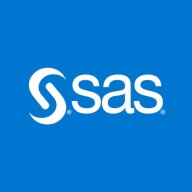

SAS Data Management and IBM InfoSphere DataStage compete in the data management category, focusing on ETL and data integration solutions. SAS has the upper hand in terms of data quality and accessibility, while DataStage is preferred for handling extensive data volumes efficiently.
Features: SAS Data Management provides robust ETL capabilities, seamless integration with data environments, and supports data quality management with rich language support for data manipulation. IBM InfoSphere DataStage excels in strong ETL features, parallel processing, and data integration, and offers flexibility with connectors for complex transformations.
Room for Improvement: SAS Data Management could enhance its licensing model, streamline database connectivity, and improve cloud-based integration. Users seek better guides and simplified non-ETL processes. IBM InfoSphere DataStage needs improvements in user interface, cloud integration, and documentation, with enhancements in support, stability, and cost-effectiveness for smaller businesses.
Ease of Deployment and Customer Service: SAS Data Management is mainly on-premises with dependable support, although users note the need for better expertise and documentation. IBM InfoSphere DataStage offers on-premises and hybrid cloud options, with users commenting on its complex deployment and solid support that could improve in responsiveness.
Pricing and ROI: SAS Data Management is considered expensive with high initial costs, justified by its comprehensive features, offering notable ROI in industries like pharmaceuticals. IBM InfoSphere DataStage, while more cost-effective than similar solutions, is still seen as expensive, providing favorable ROI by enhancing data reliability and reducing storage needs.
We also have the flexibility to submit a feature request to be included as part of the wishlist, potentially becoming a product feature in subsequent releases.
IBM tech support has allocated dedicated resources, making it satisfactory.
I wonder if it supports other areas, such as cloud environments with open source support, or EdgeShift.
The solution needs improvement in connectivity with big data technologies such as Spark.
There is significant room for improvement, especially with regard to using a hybrid approach that involves both CAS and persistent storage.
Pricing for IBM InfoSphere DataStage is moderate and not much expensive.
From my experience, SAS Data Management is an expensive tool.
IBM InfoSphere DataStage is very scalable, allowing us to extend it according to our processing needs.
It is straightforward from a design and development perspective, and also for deployment.
SAS Data Management stands out because of its data standardization, transformation, and verification capabilities.


IBM InfoSphere DataStage is a high-quality data integration tool that aims to design, develop, and run jobs that move and transform data for organizations of different sizes. The product works by integrating data across multiple systems through a high-performance parallel framework. It supports extended metadata management, enterprise connectivity, and integration of all types of data.
The solution is the data integration component of IBM InfoSphere Information Server, providing a graphical framework for moving data from source systems to target systems. IBM InfoSphere DataStage can deliver data to data warehouses, data marts, operational data sources, and other enterprise applications. The tool works with various types of patterns - extract, transform and load (ETL), and extract, load, and transform (ELT). The scalability of the platform is achieved by using parallel processing and enterprise connectivity.
The solution has various versions, catering to different types of companies, which include the Server Edition, the Enterprise Edition, and the MVS Edition. Depending on which version a company has bought, different goals can be achieved. They include the following:
IBM InfoSphere DataStage can be deployed in various ways, including:
IBM InfoSphere DataStage Features
The tool has various features through which users can integrate and utilize their data effectively. The components of IBM InfoSphere DataStage include:
IBM InfoSphere DataStage Benefits
This solution offers many benefits for the companies that utilize it for data integration. Some of these benefits include:
Reviews from Real Users
A data/solution architect at a computer software company says the product is robust, easy to use, has a simple error logging mechanism, and works very well for huge volumes of data.
Tirthankar Roy Chowdhury, team leader at Tata Consultancy Services, feels the tool is user-friendly with a lot of functionalities, and doesn't require much coding because of its drag-and-drop features.
Every decision, every business move, every successful customer interaction - they all come down to high-quality, well-integrated data. If you don't have it, you don't win. SAS Data Management is an industry-leading solution built on a data quality platform that helps you improve, integrate and govern your data.
We monitor all Data Integration reviews to prevent fraudulent reviews and keep review quality high. We do not post reviews by company employees or direct competitors. We validate each review for authenticity via cross-reference with LinkedIn, and personal follow-up with the reviewer when necessary.